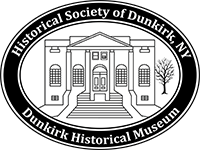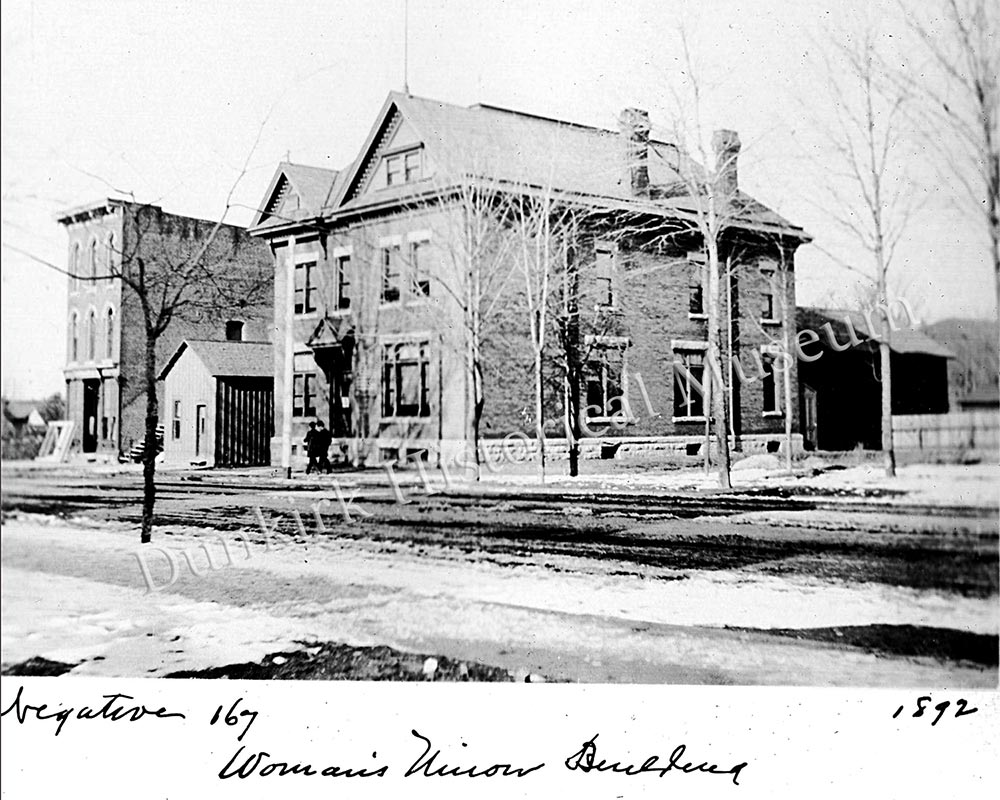The Women’s Educational and Industrial Union was established in 1888 by 65 women at the home of Mary Bookstaver, the mayor’s wife, to “increase fellowship among women, to promote practical methods for securing their educational, industrial, and social advancement.” [Constitution and bylaws pamphlet of the organization] It had a board of 24 women and the membership fee was $1.00. It met for several years in the Heyl Block but then had its own building constructed at 496 Central Avenue, designed by Fredonia architect Captain Enoch A. Curtis who also served as architect for the Fredonia Normal School gymnasium and Fredonia Village Hall). The group raised $11,000 to purchase the site, and construction was completed in 1891. I was one of the few brick Queen Anne stye buildings in Dunkirk. During the World War I the building was the headquarters of the American Red Cross for the county.
A booklet entitled “Fourth Annual Report of the Women’s Educational and Industrial Union” for the year ending 1892 listed 150 women members, many of them the wives and daughters of the most prominent men in the city. Mary Bookstaver was the mayor’s wife. Julia Brooks was the wife of Brooks Locomotive Works founder Horatio Brooks. Julia T. Willams was the wife of the editor of the Dunkirk Observer, Julien T. Williams. Elnora Babcock was the wife of the Dunkirk Public School Superintendent, and she was a woman who would rise to be press secretary of the Women’s Suffragette Movement.
But members came from all walks of life. Miss Maud Andrews was a teacher and a woman who would live beyond 100 years and be one of the most well known public school teacher in the county. Harriet Heppell was also a teacher and the wife of William Heppell, traveling agent of Dunkirk Shirt Company. Mrs. Emma Blood was wife of Charles Blood, undertaker.
The Constitution of the organization went on to say “Its purpose is to increase fellowship among women, in order to promote the best practical methods for securing their educational, industrial and social advancement.”
The Act of Incorporation stated the group was “desirous of forming a corporation for educational, charitable and benevolent purposes, under and in pursuance of an act of the Legislature of the State of New York, passed April 12th, 1848, and the acts amendatory thereof and supplementary thereto . . .” The Act of Incorporation also explained how these objectives would be accomplished, including
- “By organizing and maintaining classes in educational and industrial branches.
- By maintaining a registry for the employment of women.
- By assisting poor women to collect debts and to establish their legal rights.
- By assisting the worthy poor.
- By giving courses of lectures ion various topics, and social entertainments.”
Among its Standing Committees were these two:
Industrial and Employment Committee : “It shall be its duty to advise and adopt such industrial methods as shall best assist all women in their chosen avocations.”
Protection Committee: ” It shall be the duty of this Committee to commend the legal and social rights of women to public attention, and shall assist in all measures which may be taken to enforce the rights of any woman who may apply for assistance.”
The group sold the building in 1923 and it was torn down in the mid 1930’s to make room for a one story commercial building.


